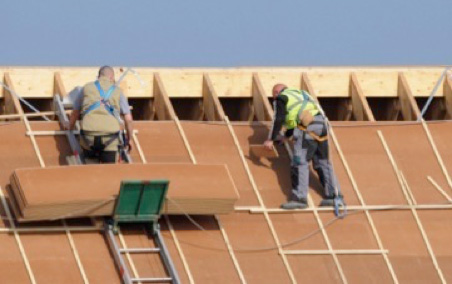How to Run Effective Safety Committee Meetings – Part One

By John Kenney, Cotney Consulting Group.
A safety committee's purpose is to create a hazard-free workplace environment for all employees. John Kenney shares his best advice for effectively organizing safety committee meetings.
In a previous article we discussed how a safety committee's purpose is to create a hazard-free workplace environment for all employees. In this series, we will explore how to have effective committee meetings.
Safety committee meetings play a critical role in ensuring the safety and well-being of employees in any organization. However, more than simply having a safety committee in place is required. For these meetings to be effective, it is important to have a well-structured and well-executed approach. This article will provide a detailed plan for effective safety committee meetings. We will cover pre-meeting preparations, structuring the meeting for maximum effectiveness, effective communication and follow-up. By following this plan, safety committee members can ensure that their meetings are productive and efficient, ultimately contributing to a safer work environment for everyone involved.
An effective safety committee meeting focuses on identifying and addressing potential safety hazards in the workplace. It should be a collaborative effort where members develop solutions to mitigate risks and prevent accidents. Some key characteristics of an effective safety committee meeting include the following:
- Clear objectives: It is essential to establish clear objectives for the meeting beforehand. This will help keep the meeting on track and ensure everyone is focused on the same goals.
- Active participation: An effective safety committee meeting involves the active involvement of all members. Each member should have an opportunity to provide input and offer suggestions.
- Structured agenda: The meeting should have a well-structured agenda outlining the key topics to be discussed. This will help keep the meeting organized and cover all relevant issues.
- Timeliness: An effective safety committee meeting should start and end on time. This shows respect for everyone's time and helps ensure the meeting is productive.
- Follow-up: After the meeting, following up on any identified action items is important. This ensures that the issues discussed are addressed promptly.
Setting clear objectives is crucial for the success of the safety committee meeting. The objectives should be specific, measurable, achievable, relevant, and time-bound (SMART). This will help ensure that the meeting stays focused and that everyone is working towards the same goals. Clear objectives also help to identify the key stakeholders who need to be involved in the meeting, and the relevant data and information required to support the discussion.
Pre-meeting preparations are an essential component of effective safety committee meetings. Proper planning ensures that the meeting is productive, organized, and focused. Some key aspects of pre-meeting preparations include:
- Setting the agenda: A well-structured agenda is critical to an effective safety committee meeting. The agenda should outline the key topics that will be discussed, the goals of the meeting, and the timeframe for each item.
- Identifying key stakeholders: Identifying the key stakeholders who should attend the meeting is important. This includes individuals with relevant expertise, knowledge, or experience related to the issues discussed.
- Gathering relevant data and information: Before the meeting, collecting relevant data and information is essential to support the discussion. This may include incident reports, safety statistics and applicable policies and procedures.
- Preparing materials: Any materials distributed during the meeting should be prepared beforehand. This includes agendas, reports, and any other relevant documents.
- Scheduling the meeting: Finally, it is important to schedule the meeting in advance and ensure all participants are available at the designated time.
A well-structured meeting helps ensure that all relevant issues are covered, and everyone can participate. It is important to structure the discussion during the meeting to maximize its effectiveness. Some key elements of structuring a meeting effectively include:
- Clear agenda: The agenda should be clearly communicated to all participants before the meeting starts. This helps to ensure that everyone is aware of the key topics that will be discussed and can come prepared with relevant information and ideas.
- Stay on track: During the meeting, it is important to stay on track and ensure the discussion focuses on the agenda items. This helps to ensure that the meeting is productive and that all relevant issues are covered.
- Time management: It is important to manage time effectively during the meeting to ensure that all agenda items are covered within the allotted time frame. This can be achieved by setting time limits for each agenda item and informing participants of the remaining time.
- Everyone's participation: Ensuring everyone can participate in the meeting is important. This can be achieved by encouraging participation from all participants, soliciting feedback, and creating an environment where everyone feels comfortable sharing their ideas.
- Action items: Identifying action items during the meeting and assigning responsibility for each item is important. This helps to ensure that the issues discussed are addressed in a timely manner.
Having a clear agenda is one of the most important aspects of structuring a meeting effectively. The agenda should be distributed to all participants before the meeting starts and should outline the key topics that will be discussed. This helps to ensure that everyone is aware of the meeting's objectives and can come prepared with relevant information and ideas.
Staying on track during the meeting is also important. This can be achieved by sticking to the agenda and avoiding tangents irrelevant to the discussion. Time management is also important to cover all agenda items within the allotted time frame. All participants should have the opportunity to participate and contribute to the discussion. This helps to ensure that all relevant perspectives are considered and that everyone has a stake in creating a safer work environment.
In part two of this series, we will continue discussing communication and follow up after the Safety Committee Meeting.
Learn more about Cotney Consulting Group in their Coffee Shop Directory or visit www.cotneyconsulting.com.
About Cotney Consulting Group
Unlike other “business” consultants, Cotney has 65+ years’ experience solving the problems of roofing companies. With real experience running 8-figure, multi-million dollar companies, our consultants did not learn about business consulting from a book — we have experienced the same problems that you have, solved them and moved on to create a storied history of success. We can share our experiences with you and help you achieve success. Learn more at www.cotneyconsulting.com.























Comments
Leave a Reply
Have an account? Login to leave a comment!
Sign In